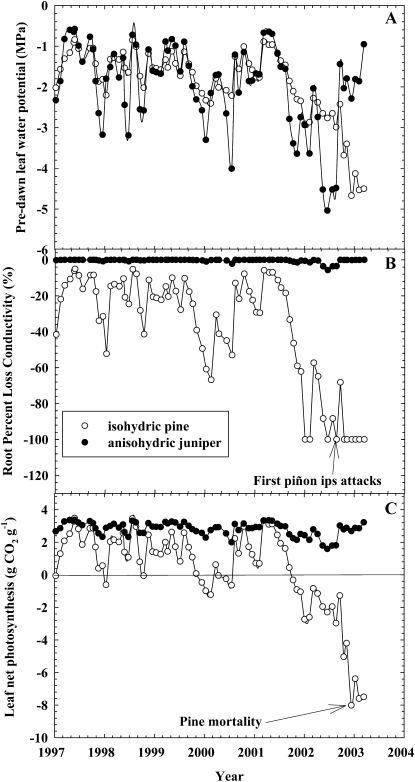Figure 3.
Observations of predawn water potential (A), loss of hydraulic conductivity of the root system (B), and net photosynthesis (C) of relatively isohydric and anisohydric species (piñon pine and one-seed juniper, respectively) during drought. Predawn water potential measurements are from Breshears et al. (2009). Root conductivity loss due to cavitation and net photosynthesis are shown for both species during this period using published species-specific equations for percentage loss of root hydraulic conductivity and net photosynthesis (McDowell et al., 2008; Willson et al., 2008; B and C). Roots were used rather than stems for B because they are more vulnerable and thus better represent the whole-plant connection to soil water availability and also because predawn water potentials (A) are expected to represent soil water availability. These estimates assume that refilling is possible when soil water potential is more positive than minimum predawn plant water potential, but they are conservative because the net photosynthesis model is for foliage only and does not include carbon losses to respiration of nonphotosynthetic tissues.

